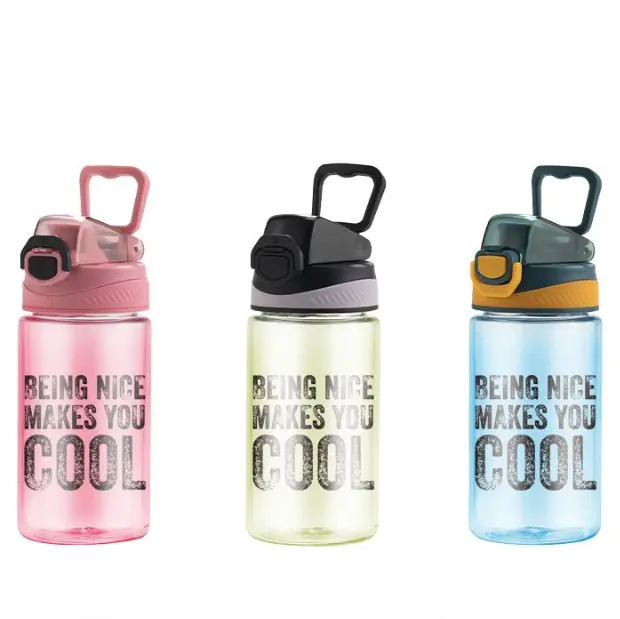Specific production process of renewable plastic water cups
Specific production process of renewable plastic water cups
In today’s era of increasing environmental awareness, renewable plastic water cups have attracted widespread attention due to their environmental friendliness. This type of water cup can not only reduce dependence on traditional petroleum-based plastics, but also effectively reduce the pollution of plastic waste to the natural environment. This article will introduce the specific production process of renewable plastic water cups in detail, including material selection, equipment preparation, production process and quality control.
1. Material selection of renewable plastic water cups
The production of renewable plastic water cups first requires the selection of suitable renewable materials. Common renewable plastic materials include polylactic acid (PLA), polybutylene succinate (PBAT), modified bamboo fiber (PCF), etc. These materials have good biocompatibility and degradability, and can be decomposed into harmless substances in the natural environment.
(I) Polylactic acid (PLA)
PLA is a bio-based plastic that is mainly derived from renewable resources such as corn starch or sugarcane. It has good transparency and glossiness and is suitable for the production of disposable or reusable water cups. The production process of PLA is relatively environmentally friendly, and it can naturally decompose into carbon dioxide and water under appropriate conditions.
(II) Polybutylene succinate (PBAT)
PBAT is a biodegradable polymer with good flexibility and heat resistance. It is often mixed with other materials (such as PLA) to improve the performance and degradability of the product.
(III) Modified bamboo fiber (PCF)
Bamboo fiber is a natural renewable material with good antibacterial and biodegradability. By compounding with high molecular polymers such as polycarbonate, bamboo fiber can improve the durability and impact resistance of water cups.
II. Selection of production equipment
The production of renewable plastic water cups requires a series of professional equipment, including injection molding machines, thermoforming machines, drying equipment, etc. The selection of these equipment needs to be determined according to the characteristics of the material and the design requirements of the product.
(I) Injection molding machine
The injection molding machine is one of the core equipment for the production of plastic water cups, mainly used to inject molten plastic into the mold for molding. When selecting an injection molding machine, you need to consider its injection pressure, injection speed, mold temperature and other parameters. For example, injection molding of PLA materials requires higher temperatures and pressures to ensure the molding effect.
(ii) Thermoforming machine
Thermoforming machine is mainly used to heat plastic sheets and mold them into the shape of a water cup. This equipment is suitable for the production of disposable plastic water cups, with the advantages of high production efficiency and low cost.
(iii) Drying equipment
Drying equipment is used to remove moisture from plastic materials to prevent bubbles from forming during the molding process. For example, materials such as PLA and PBAT need to be dried before injection molding.
III. Production process
(i) Raw material preparation
Drying treatment: Put renewable plastic raw materials (such as PLA, PBAT, etc.) into the drying equipment for drying to remove moisture. The drying temperature and time need to be adjusted according to the characteristics of the material. For example, the drying temperature of PLA is usually 80-100℃ and the time is 2-4 hours.
Mixing ingredients: According to the product design requirements, different proportions of renewable plastic raw materials are mixed with other additives (such as plasticizers, lubricants, etc.).
(II) Molding process
Injection molding:
Injection and filling: Heat the dried raw materials to a molten state, inject them into the mold through an injection molding machine, and fill the entire cavity. The injection pressure and speed need to be adjusted according to the characteristics of the material and the design of the mold.
Cooling and curing: The molded water cup is cooled and shaped in the mold. The temperature and cooling time of the mold have an important impact on the quality of the product.
Demolding and trimming: The cooled water cup is taken out of the mold, and the edges are trimmed and trimmed to remove excess material edges and burrs.
Thermoforming:
Heating: Heat the plastic sheet to a softened state.
Molding: Use a thermoforming machine to adsorb the heated sheet to the mold surface to form the shape of the water cup.
Cooling and trimming: The molded water cup is trimmed after cooling.
(III) Surface treatment and decoration
Surface treatment: Surface treatment of the water cup is performed as needed, such as polishing, painting, etc.
Printing and labeling: Print or label on the surface of the water cup to increase the product’s aesthetics and brand recognition.
(IV) Quality Control and Inspection
Appearance Inspection: Check whether the appearance of the water cup meets the requirements, such as no bubbles, no cracks, etc.
Dimension Inspection: Measure the various dimensional parameters of the water cup to ensure that they meet the design requirements.
Functional Testing: Test the water cup for heat resistance, cold resistance, impact resistance, etc.
(V) Packaging and Storage
Packaging: Pack the water cups that have passed the inspection, usually in plastic bags or cartons.
Storage: Store the packaged water cups
Post time: Feb-05-2025
